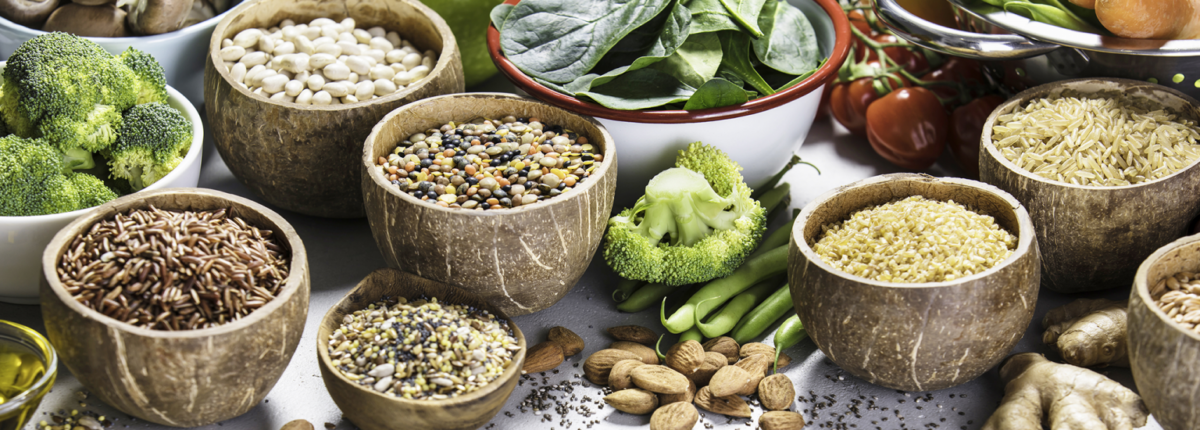Fiber + Type 2 Diabetes Management
You’ve probably heard about the importance of fiber as part of your diet for a better diabetes management. But, do you know why it is important, what are the best sources of fiber, and above all, what does it really do inside your body to help you manage your blood glucose levels? We will tell you about it today.
According to Burkitt and other collaborators, inadequate fiber intake is linked to a progressive increase in chronic diseases such as diabetes. But the fermentation of the fiber by the bacteria found in the intestine has beneficial effects for your health.
Microorganisms in your body
Did you know that there are microorganisms that live inside your body? It is generally thought that microorganisms could be harmful and that you should avoid them, but that is not the case when it comes to intestinal flora.
Intestinal flora is made up of bacteria that colonize your intestine from birth, and it changes over time depending on various factors such as diet, medications, the climate where you live and the stress of daily life. Because of this, there is a close relationship between the biological activity of these bacteria, the metabolites they produce when fiber is fermented, and the body functions, providing many benefits depending on the type of fiber.
What is fiber made of?
Fiber is basically a component found in fruits and vegetables that are resistant to break down by digestive enzymes and are not absorbed by the small intestine. It is partially or completely fermented in the large intestine, and has several effects, like reducing the absorption of other substances from food such as cholesterol and glucose, preventing them from entering the bloodstream.
Fiber and its properties
The properties that fiber can have depend on its composition and when soluble fibers have contact with water. They form a viscous solution that affects how fats and glucose are metabolized, and it is potentially anticarcinogenic.
On the other hand, insoluble fiber retains water but forms less viscous substances that increase the volume of stool by accelerating intestinal transit, which helps to treat and prevent constipation, among other benefits.
From what we can gather, fiber has an effect on the body because when you consume a greater amount of fiber, the time it takes to chew reduces the speed at which it goes into the digestive system. From the moment it is in your mouth, it already has a positive effect, considering that chewing more causes a greater production of saliva which leads to an improvement in oral hygiene.
In the stomach, fiber also slows evacuation, causing the stomach to relax and making you feel full longer.
In the intestine, as previously mentioned, it modifies the passage speed decreasing the absorption of glucose, fat and some amino acids as well as bile acids, helping to lower cholesterol levels. However, you should also keep in mind that a high fiber diet can decrease the absorption of calcium, iron, copper and zinc.
It is important to consider that although fiber fermentation is beneficial, it also has some negative effects that should be kept in mind such as flatulence, bloating and abdominal pain, but don’t worry, these effects may decrease if you ingest more fiber gradually to allow the intestine to adapt, and also if you drink more water.
The effects of fiber while living with diabetes
The main benefits of fiber in diabetes management include a decreased glucose absorption because gastric evacuation is slower and it gets trapped in the fiber’s viscosity. Fiber fermentation products decrease hepatic glucose production and contribute to the reduction of peripheral insulin resistance. Insulin resistance is one of the most important factors in the body’s proper use of glucose.
In addition, it reduces fat absorption, improving lipid metabolism.
Recommendations
Diabetes Canada guidelines recommend consuming between 25g and 38g of total fiber (soluble and insoluble fiber) a day if you’re between 19 and 50 years of age, and between 21g and 30g a day if you’re over the age of 50, to maintain better blood glucose and insulin management.
| FIBER SOURCES | |
| SOLUBLE | INSOLUBLE |
|
|
You should consume both sources of fiber and always remember that hydration is important to lessen some unwanted effects of fiber intake.
Remember that the diet plan you follow will depend on different factors, including what food you like and prefer. Not all diet plans are fit for everyone, so it is important to visit a dietitian in order to design a plan together.





